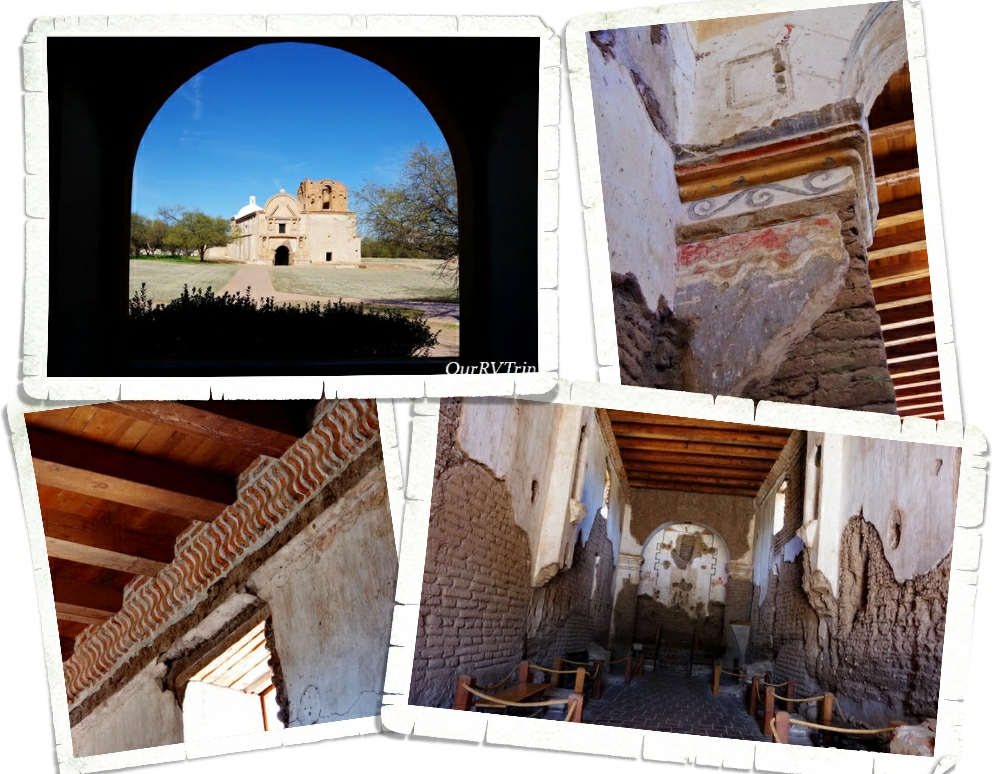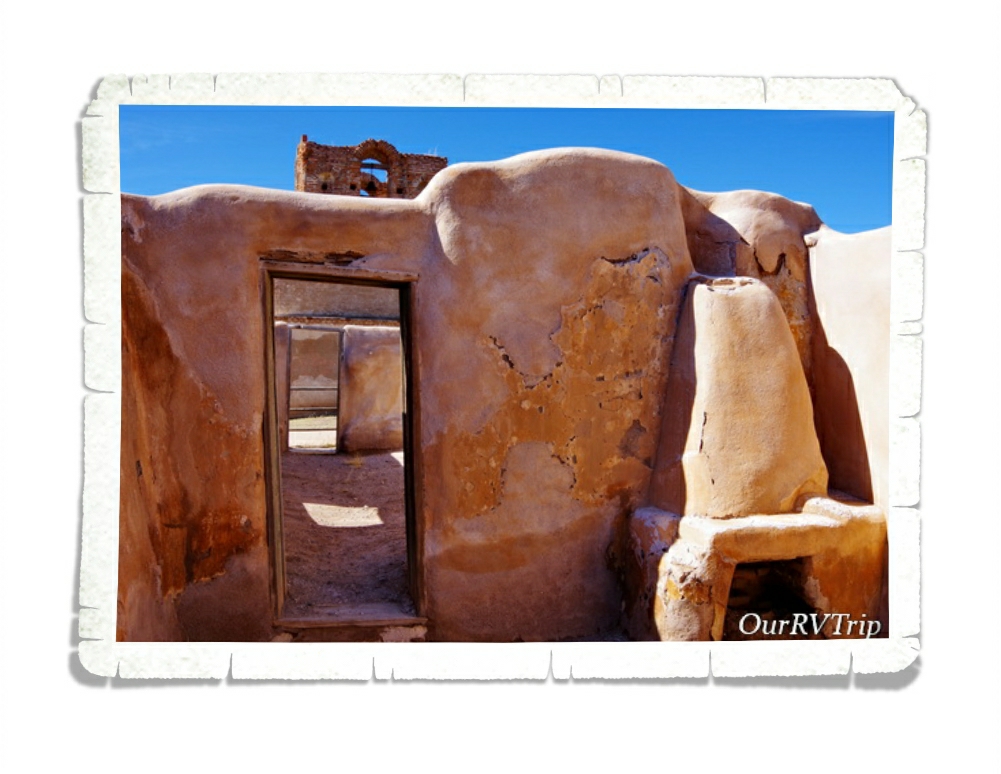
Old Missions and Ghost Towns
Hey Guys!! This is the last post for our Benson, Arizona area adventures! We spent two weeks in the area and crammed a ton of explorations in and still didn’t get to everything on our list.
We’re always up for a ghost town! I found out about Fairbank from a brochure I found at one of the stores in Benson and it immediately went on our list. Fairbank is part of the San Pedro Riparian National Conservation Area and is run by the BLM. It’s pretty much out in the middle of nowhere.
There’s a small visitor center/museum set up in the old schoolhouse. When a volunteer is available to man it, the schoolhouse is open. We lucked out and it was open the morning we went. It’s a neat little schoolhouse. There are all kinds of trinkets and memorabilia that’s been found in Fairbank on display.
It’s hard to believe Fairbank was once one of the largest cities in the West. Three different railroad lines passed through Fairbank plus it was the closest railroad stop to the still famous town of Tombstone. First settled in 1881, Fairbank grew to a booming population of 15,000 residents by 1882. When the Tombstone mines closed due to flooding in 1886, Fairbank started its decline.
Fairbank had full-time residents until the early 1970s. They kept a small general store going but eventually, everyone moved away and the BLM acquired the land in 1986. There has been some restoration of a few of the buildings. They’re hoping to eventually restore the general store and the saloon. We had a fun time walking around looking at the buildings…imagining what life would have been like there when it was booming.
Tumacácori National Historical Park consists of about 360 acres and is split into three separate units. Each unit protects the ruins of a Spanish mission community. Two of the units are in such disrepair that they’re closed to the public and only available for private tours through the winter. We only made it to the main park to see Mission San Jose Tumacácori.
The very first Mission San Jose Tumacácori was built in January 1691 by the Spanish Jesuit padre Eusebio Francisco Kino and was the very first Jesuit mission in Arizona. Due to a rebellion in 1751, the mission was moved and rebuilt.
Part of the granary, where they kept the food, still stands. They’ve put some big pots in it to give you an idea of what it would have looked like while it was being used. I thought it was smart that there was an indention in the shelf to keep each pot in place.
You can also find the ruins of a small cemetery and a mortuary chapel on the grounds. I found the mortuary chapel interesting…we’ve been to several missions before, but had never seen a mortuary chapel before.
Before the Spanish arrived, this land was home to the O’odham. The Spanish called the ones that lived near the river Pima and the ones that lived in the desert Papago. The O’odham were farmers and excellent basket weavers. You can see a reproduction of a traditional O’odham home (called a ki) on the park grounds as well. The O’odham were a peaceful people unless they had to defend their homes…they would spend the next one hundred years in an uneasy and often times violent relationship with those that called the mission home.
In 1768 the Jesuits were replaced by Franciscan Catholics due to a political change. The Franciscans started to redecorate the mission and build a much larger church in 1880. They worked on the new church for twenty years, but never completely finished. The new, bigger…more grand church was only used until 1828. At that time, the Mexican government forced all Spanish born settlers out of their territory…this included the mission’s last resident priest.
In 1848, following the Mexican-American war, the mission was completely closed and the last residents were forced to leave. The entire area became the property of America in 1853 during the Gadsden Purchase when land south of the Gila River was transferred to Arizona. The mission sat empty until 1908 when President Theodore Roosevelt declared it Tumacácori National Monument and the NPS started restorations and repairs.
The day we went there were some volunteer demonstrators on the grounds. The boys loved watching and helping the blacksmith. They helped make a coat hook…which we got to keep. It’ll hang in our home someday when we get a sticks-n-bricks. They also had someone making fresh flour tortillas and beans. You could get a sample of beans and salsa rolled in a fresh tortilla. It wasn’t the worst thing. I would have gladly paid for an entire plate of them. We always spend money in the visitor centers when we visit the parks. They need the funds and a portion of every dollar you spend at a park goes to that park.
We found a place called Wisdom’s Café just down the road to grab some grub. The food was excellent, but the service was incredibly slow. Unfortunately, it was just our waitress. We saw all of the other workers hustling. If you ever go to Wisdom’s Café make sure you get one of their famous fruit burros! You can get them with or without ice cream, but who are we kidding…I know y’all will get the ice cream!
On the way home, we noticed all of the street signs were in kilometers instead of miles. We were pretty close to the border…but we’ve been pretty close to the border quite a few times and had never noticed that before.
We saw some ah-mazing sunsets while we were in the Benson area! Just truly gorgeous! The southwest doesn’t play around when it comes to sunsets and sunrises.
That’s it Guys!! It took three posts to get through our Benson area adventures! I hope y’all are enjoying seeing some places you might not have known about and maybe you’ve learned a little something too. 🙂
See y’all down the road!
#NationalParkTour












